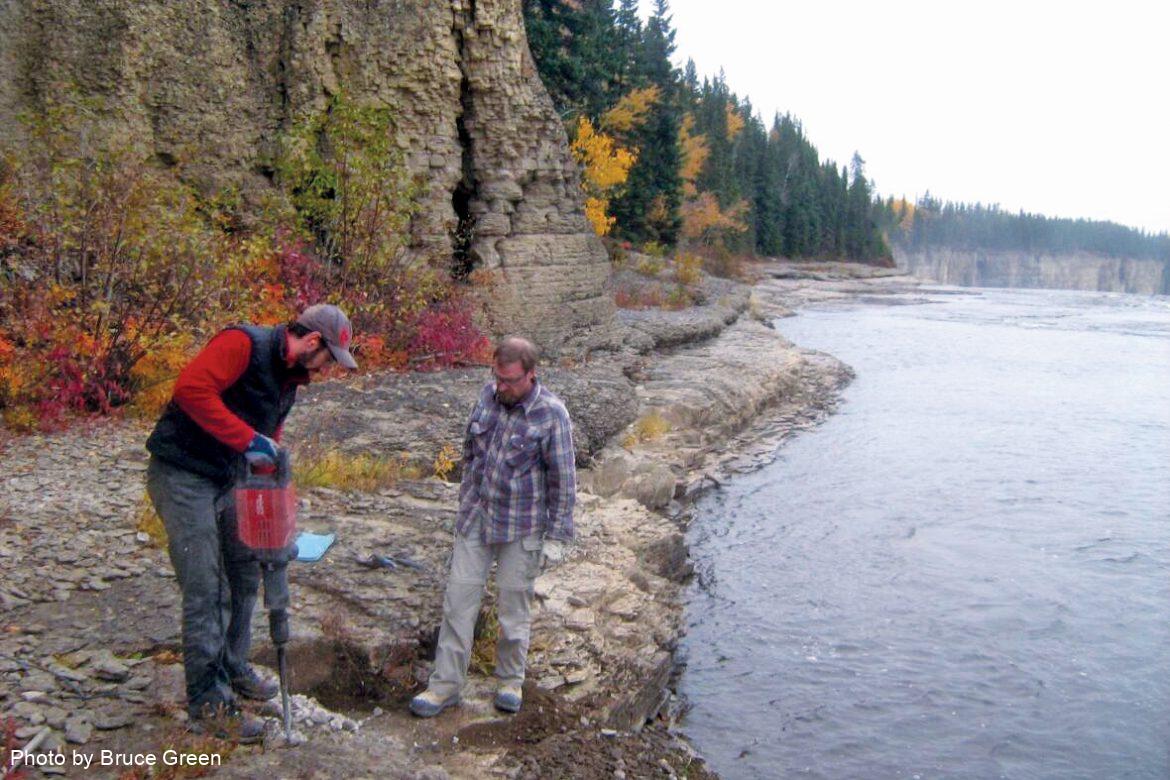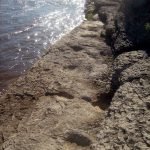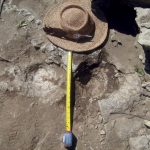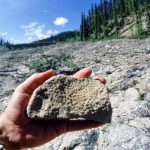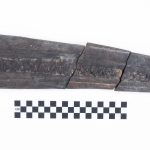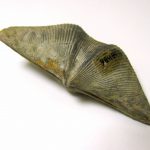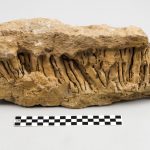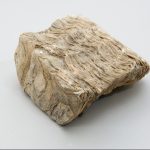380 Million Years Ago
An Ancient Fish Trackway
A remarkable set of fossilized tracks (also called ichnite) are preserved in rock on the banks of the Hay River. These tracks help paint a picture of what life was like in the South Slave Region of the NWT nearly 380 million years ago, in what is known as the Devonian Era. This fossil trackway is a significant find because it is one of the oldest vertebrate trackways on the planet and preserves evidence of a distant ancestor whose lobed fins are an evolutionary step toward the arms and legs of future terrestrial vertebrates, including humans.
During the Devonian Era, the South Slave Region of the NWT was covered by a seaway providing marine habitat for many animal species. The Devonian Era is commonly referred to as the “age of fishes” because these animals were the dominant large animals of the time. Many fossils have been found in Devonian-age sedimentary rocks in Hay River and other parts of the western NWT.
Alexandra Falls, near Enterprise, has a series of large, round impressions in rock thought to have been made by a fish called a sarcopterygian, a prehistoric predatory animal that hunted in the shallow seas at the time. Sarcopterygii belongs to a group of aquatic animals whose limb-like fins propelled their long bodies (up to six metres) along the muddy bottom, leaving impressions in the fine-grained, calciferous sediment. Over time, the sediment solidified into limestone and preserved the fossil trackway we see today.
Fossil evidence of marine life from ancient time periods exists across the NWT. Brachiopods from 400 million years ago are also found along the Hay River. There are coral colonies above the Sambaa Deh Falls in the same region. Stromatolites – fossilized mats of cyanobacteria from billions of years ago – can be seen on Blanchet Island, Great Slave Lake. Trilobites from the Mackenzie Mountains represent marine life over 500 million years ago. One of the more spectacular marine specimens in the NWT is the Ichthyosaur, a predatory reptile that lived 110 million years ago.
